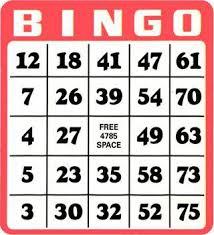Improve Sales With A “Sales Requirements Summary”
Improve Sales With A “Sales Requirements Summary”
In today’s market buyers have the power to find solutions to their problems. Sales people and their sales processes must adapt based on what we know about buyers today. Market leading sales organizations are adding the power of the “sales requirements summary” into their solutions presentations to win more sales, and increase sales velocity.
When we ask salespeople why a buyer chose an alternative product we often hear it was price, followed by a unique feature or benefit, and then relationship. However when we ask buyers why they did not buy, “price” was not on the list of reasons. So if price is not on the list, why is it buyers do not buy? The consistent and overwhelming answer was;
“I do not believe the salesperson clearly understands my problem, and therefore I do not trust the solutions he is presenting will adequately and completely solve my problem.”
To overcome this buyer concern and ultimately improve sales close percentages and increase sales velocity I coach salespeople to add a “requirements summary” in their proposal. So what is a requirements summary? If your industry demands long presentations there are a number of templates for requirement summaries. However I believe in the KISS principle so I have found a good requirements summary includes the following;
- restate the problem to be solved as you understand it
- restate buyer and all project influencers
- provide details from your meeting notes about the specifics of the problem, corresponding products and or services your solution must work with
- how to measure the success of your proposed solution
- restate timing the buyer expressed for the solution to his problem to be delivered
- state your delivery commitment with a call to action…if you need the product delivered by ______ we will require an order by ________.
- speak to all buyer and influencer pain points discovered in the sales qualification process
- state how your solution uniquely solves the requirement and pain
- specific part number(s)
- total cost summary
- timeframe for quote, ideally 30 days
The requirements summary helps overcome the reason why buyers do not buy; Trust. In addition to showing you clearly understand the buyer’s requirements and pain, the summary also provides the opportunity for the buyer to share if requirements have changed.
Most salespeople are so focused on selling they are not truly listening. Knowing you must produce a requirements summary in your sales proposal insures your salespeople are asking questions to intimately understand the nature of the problem to be solved and how the buyer and his or her team will measure the results.
Does your sales team provide a requirements summary in each proposal?
Do you see any negatives in providing a requirements summary in your sales process?
A requirements summary is a simple and effective way to build trust with your buyer by illustrating you understand his problem and how you plan to fix it. Most competitors will be leading with price because they feel that is what wins orders. Be one of the top 10% of sales professionals by taking copious notes concerning the problem to be solved, all those who have input in the solution, and everyone’s pain points and you will win more sales faster regardless of how “cautiously optimistic” your buyers may be.




